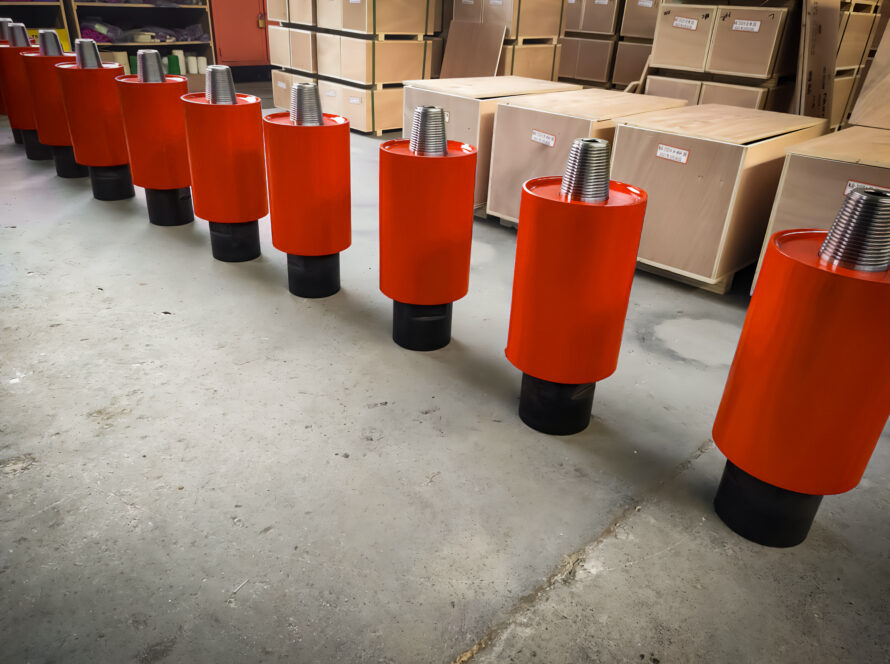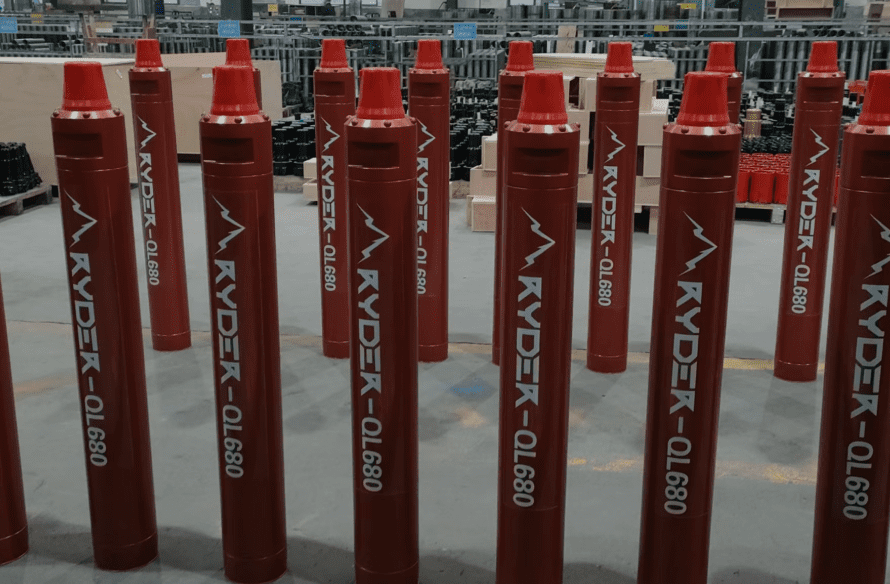Downhole hammer drilling was developed in 1951, it is a method that is carried out when a hammer hits directly in the mouth of the bottom of the hole, in this way, the loss of energy transmitted by the percussion of the piston is avoided. Through the linkage, since from 15 to 20 meters, the top hammers (hydraulic tools that generate blows in the upper part of the drilling line) are no longer effective, this guarantees that the drilling speed is homogeneous with the increased depth. Currently down the hole hammer drilling can reach depths greater than 100 meters and is generally used in hard rock wells.
Characteristics of the down-the-hole hammers
- They have a drilling speed between 0.5 to 0.6 meters per minute, in a diameter of 105 and 165 mm.
- Its hit frequency varies from 600 to 700 hits per minute, with this frequency very hard rocks can be broken.
- Thrust is around 85 kilograms per centimeter in diameter.
Pneumatic and hydraulic rotary hammers
The hammers can have pneumatic or hydraulic rotation motors:
Pneumatic Rotation Hammers
Pneumatic rotary hammers work through compressed air, which has the same power in the impact mechanism as in the air purge mechanism. Its weight and size are less than hydraulic rotary hammers, but they can only be used in projects whose drilling diameter does not exceed 30 meters.
Hydraulic Rotating Hammers
The design of hydraulic rotary hammers is similar to pneumatic rotary hammers, although the actuation is carried out through a group of pumps that supply an “oil flow” that drives the components. This tool represents a technological advance over pneumatic rotation, because it works with fluids at higher pressures than the previous ones, obtaining a lower pressure drop. This is because hydraulic rotary hammers use only the energy required per meter drilled, allowing for more efficient use of energy.
Components or parts
Down-the-hole hammers can have 4 components or parts: Cylinder, hollow tube, motor, and trolley/transport.
- Cylinder: The length of this piece is based on the diameter of the piston stroke and its diameter is according to the diameter of the bore. At the end of this cylinder is housed the drill chuck, housed in a chuck.
- Hollow tube: Connects the hammer with the equipment and is in charge of transmitting the rotation torque and the feed force. Down-the-hole drilled holes generate minimal deviations, achieving good results in heavily fractured rocks.
- Motor: The hammers can have a pneumatic or hydraulic rotation motor.
- Cart or transport: This tool has a cart or transport that has a compressed air compressor.


